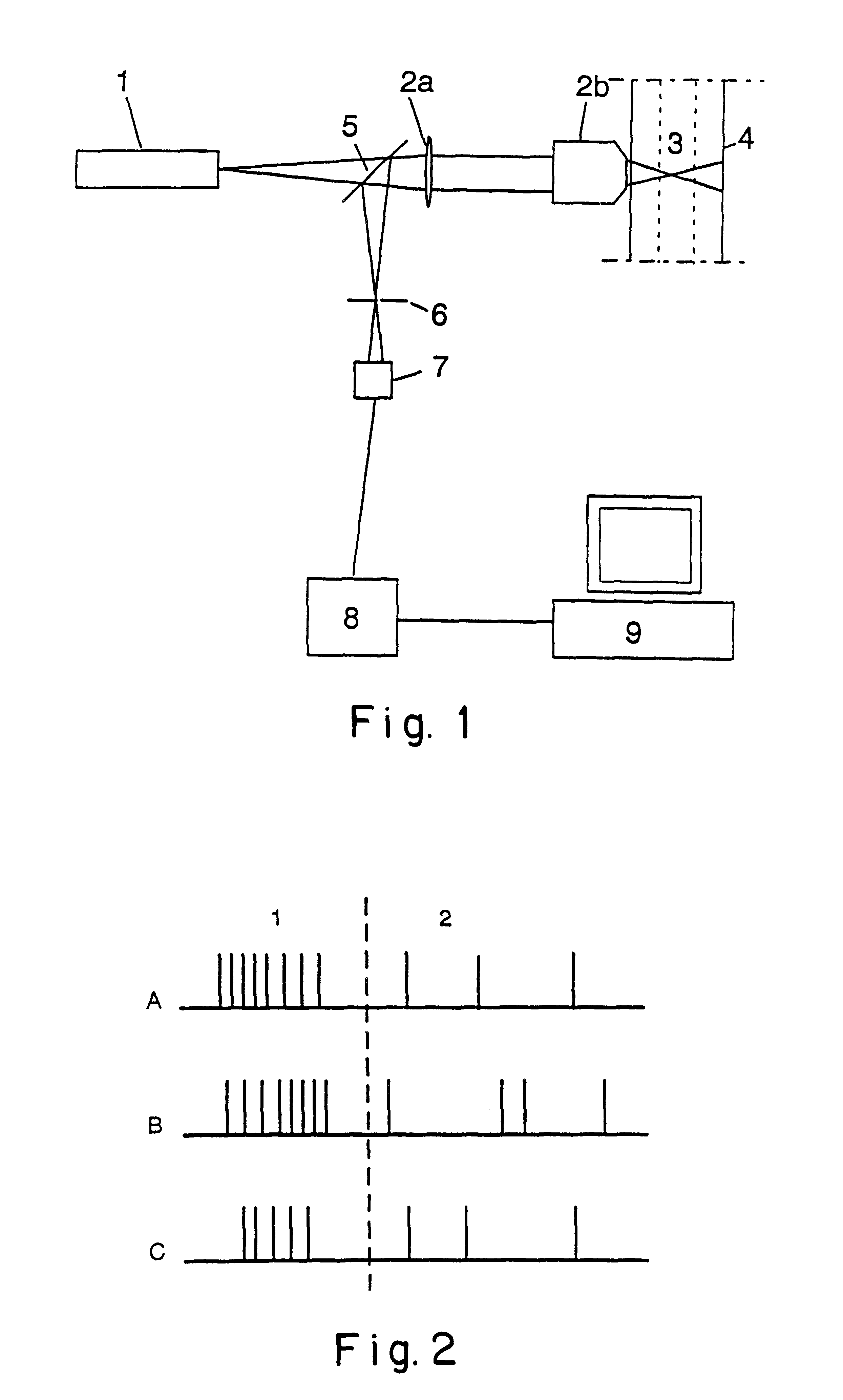Flow fluorometric method
a flow cytometry and flow method technology, applied in the direction of material testing goods, instruments, analysis by subjecting materials to chemical reactions, etc., can solve the problems of high-sensitivity flow cytometry, sensitivity of detection substantially limited, and high cost of argon-ion lasers, etc., to achieve better signal-to-noise conditions
- Summary
- Abstract
- Description
- Claims
- Application Information
AI Technical Summary
Benefits of technology
Problems solved by technology
Method used
Image
Examples
Embodiment Construction
and Performance of a Confocal Set-Up
The optical set-up and its performance as shown in FIG. 1 was tested. The light source (1) was a frequency doubled 10 mW CW Nd:YAG laser producing 300 .mu.W beam at 532 nm wavelength. The illumination light was focused to the sample (3) through a microscope objective (2b) with numerical aperture of 0.5. The sample (3) was fed through a position-adjustable capillary tube (4) in conjunction with a simple liquid handling system. The emitted fluorescence light was separated from the illumination light by a dichroic mirror (5) and pinhole / aperture (6), and was detected by an avalanche photon counter (7)(EG&G Optoelectronics, Canada, type SPCM-141-AQ).
The set-up was tested in single-photon excitation confocal fluorescence mode with a test-sample containing E.coli bacteria stained with specific Rhodamine-B labelled antibodies at a predetermined concentration. The single photon bursts detected from the bacteria were Poisson distributed in the time domain ...
PUM
 Login to View More
Login to View More Abstract
Description
Claims
Application Information
 Login to View More
Login to View More - R&D
- Intellectual Property
- Life Sciences
- Materials
- Tech Scout
- Unparalleled Data Quality
- Higher Quality Content
- 60% Fewer Hallucinations
Browse by: Latest US Patents, China's latest patents, Technical Efficacy Thesaurus, Application Domain, Technology Topic, Popular Technical Reports.
© 2025 PatSnap. All rights reserved.Legal|Privacy policy|Modern Slavery Act Transparency Statement|Sitemap|About US| Contact US: help@patsnap.com

